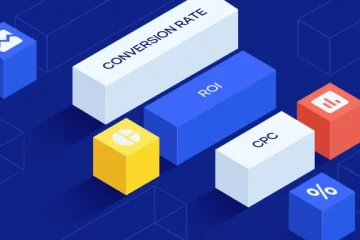Manual link building is more important than ever in 2024

The March 2024 updates have had a significant impact on the search engine results pages (SERPs). Shortly after the updates were implemented, Google took action by deindexing websites, citing them as low-quality or unoriginal. This move by Google signals a shift in the landscape of SERPs, as they aim to eliminate 40% of such content, heralding a new era in search.
Despite these changes, the importance of link building persists and has, in fact, become more critical. Gary Illyes, on a Search Off the Record podcast episode, emphasizes the significance of natural backlinks as the primary means for search engines to discover new websites. Consequently, engaging in manual link building is not only advisable but imperative for achieving success in this evolving environment.
Manual link building involves proactive efforts such as outreach, strategic content creation, and relationship building to acquire links. This approach differs from automated or spam-driven tactics, focusing instead on securing high-quality, relevant links from authoritative sources.
These authoritative sources prioritize their audience by delivering valuable, informative content. Therefore, obtaining a backlink from such sites is considered highly desirable. Given the recent updates in March 2024, the importance of securing these types of backlinks has been underscored more than ever.
Why cheap/paid links are bad
Purchasing links is considered a spammy tactic that violates Google’s guidelines. Google’s algorithm evaluates a website’s relevance to a search query based on the quality of its backlink profile.
When websites buy links primarily to boost their rankings, they manipulate the algorithm, which categorizes those links as spam. The only permissible scenario is if paid links are clearly marked as “sponsored,” but even then, they must be pertinent to your site.
While buying links may appear to be a shortcut to bypass time-consuming tasks, any benefits are typically short-lived. Once Google identifies unnatural link patterns, it’s likely to penalize the website, resulting in a decline in rankings. Other drawbacks include:
– Ignoring of links by Google.
– Diminished credibility and reputation.
– Challenges in recovery.
– Squandering of resources (i.e., wasted money).
The SpamBrain AI system can detect patterns of link spam and devalue the associated links. In 2021, Google revised its spam policies to curb link spamming, thereby improving the quality of SERPs.
Additionally, inexpensive links often lead users to irrelevant or substandard content, leading to a negative user experience (UX). Google prioritizes websites that offer valuable and pertinent information to users. If users avoid clicking on your site due to poor UX, Google interprets this as an indication that your site shouldn’t be prominently featured in the SERPs.
So, what’s the alternative? Emphasize the acquisition of quality backlinks.
The recipe for manual link building
Ultimately, manual link building aims to earn links, not buy them, by producing content that attracts links. This approach is a sustainable way to withstand algorithm changes.
While no two link building strategies are alike (and neither should they be), there are some foundational practices that every strategy should follow to be successful.
Relevance, relevance, relevance
Relevant links signal to search engines that your website holds authority within its specific field.
To illustrate, consider a research paper. Such a paper references relevant sources to demonstrate the author’s grasp of the subject matter.
Likewise, backlinks function similarly. When a website attracts links from pertinent sources within its niche, it showcases its authority to both search engines and users interested in that particular topic.
Moreover, relevant backlinks play a vital role in driving targeted traffic to your site. These visitors are more inclined to interact with your content, potentially leading to increased conversion rates. Additionally, relevant links contribute to an enhanced user experience by offering supplementary resources relevant to their search query.
Furthermore, acquiring relevant links can facilitate the establishment of partnerships within your industry. Cultivating relationships with authoritative sources supports a sustainable link-building strategy, opening avenues for collaboration that can further bolster your website’s online presence.
Helpful, original content
The foundation of manual link building lies in the creation of helpful and unique content. This content serves to provide value to the audience by addressing their needs, answering queries, or offering solutions to their problems.
Users tend to engage with and revisit content that they find helpful. This not only boosts user satisfaction but also fosters trust and credibility for your brand — prerequisites for visibility in the SERPs.
High-quality content is crawled more frequently, as noted by Illyes:
“The frequency of URLs being crawled reflects the demand for your content in search. If people actively seek and link to your content, it naturally increases the crawl rate from your site.”
Original content not only distinguishes you from competitors but also positions you as an authority in your field.
Offering unique insights demonstrates expertise and credibility — attributes that Google prioritizes in search rankings. Websites are more inclined to link to such content as it caters directly to the audience’s needs, laying the groundwork for relationship-building and the acquisition of relevant backlinks.
However, the emergence of AI writers and automated content tools has posed challenges in maintaining content quality and originality. While these tools offer efficiency and scalability, they often produce shallow, derivative content lacking in uniqueness.
Google places value on content that exhibits a deep understanding of its subject matter. Generating thin content fails to demonstrate this profound topical comprehension.
Manual link building places significant emphasis on crafting and promoting genuinely valuable content that distinguishes itself amidst the abundance of automated content noise.
A dash of strategy
Simply relying on finding relevant links and producing original content is not sufficient.
It’s crucial to formulate a strategy for your manual link building endeavors to ensure efficient resource allocation while navigating the vast web for links.
A well-crafted strategy can contribute to:
1. Clear objectives: Defining specific goals for the link building campaign, whether it’s boosting website traffic, enhancing search engine rankings, or establishing authority within a niche.
2. Target audience identification: Tailoring link building efforts to resonate with the intended audience, thereby increasing the likelihood of securing pertinent and high-quality backlinks.
3. Competitive analysis: Studying competitor strategies to inform decision-making and devise a unique approach that provides a competitive edge.
4. Content planning: Recognizing the importance of top-notch, valuable content in attracting organic backlinks and building credibility within the industry.
5. Relationship building: Cultivating genuine connections with key figures in the industry can lead to natural link acquisition opportunities through collaborations, guest posting, interviews, and content partnerships.
6. Diversification of link sources: Mitigating the risk of search engine penalties by diversifying link sources, thus fortifying the resilience of link building efforts.
7. Measurement and analysis: Regularly monitoring and analyzing performance metrics to gauge effectiveness and identify areas for optimization and improvement.
By adopting a comprehensive and tailored approach to link building, integrating elements such as competitor analysis, backlink evaluation, and other strategic maneuvers, you can develop a plan that maximizes the likelihood of success and delivers tangible outcomes for your website.
Digital PR: The next frontier
As the emphasis on manual link building grows, securing high-quality backlinks becomes increasingly challenging. With a surge in competition for these links, brands face fierce rivalry in this domain.
How can brands distinguish themselves?
Digital PR emerges as the new frontier in manual link building. Its core lies in fostering relationships, garnering brand exposure, and crafting content aligned with E-A-T (Expertise, Authoritativeness, Trustworthiness) guidelines, making it a reliable and potent link-building strategy.
This approach entails forging connections with influential figures in the industry, thereby enhancing the chances of acquiring valuable backlinks from reputable sources, such as journalists, bloggers, and pertinent influencers.
Furthermore, digital PR assets serve to amplify brand visibility, extending reach to a wider audience and eliciting more backlinks from interested parties.
In essence, digital PR offers a holistic framework for manual link building, integrating relationship cultivation, brand exposure, content collaboration, and enduring brand-building endeavors to cultivate a continuous stream of link-building opportunities. This, in turn, bolsters a website’s visibility, credibility, and search engine rankings.
To attain success, websites must prioritize the cultivation of relevant links through proactive outreach and relationship nurturing.
By adhering to these fundamental principles, websites can assert their authority to search engines and foster alliances within their respective industries.
Ultimately, manual link building presents a sustainable approach to navigating algorithmic shifts and attracting targeted traffic to one’s site.













